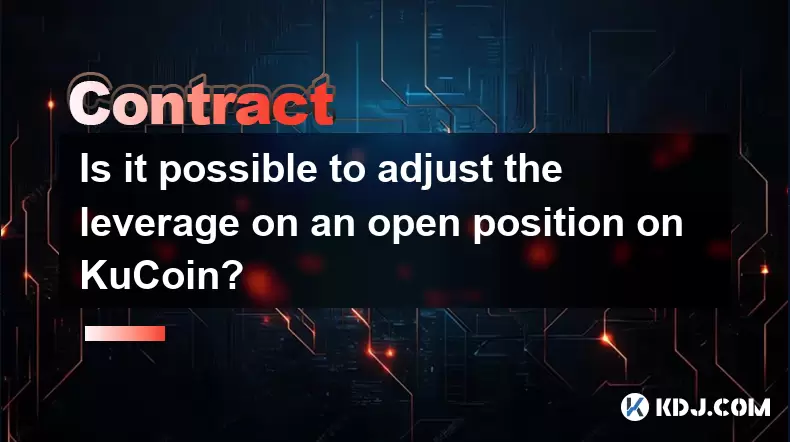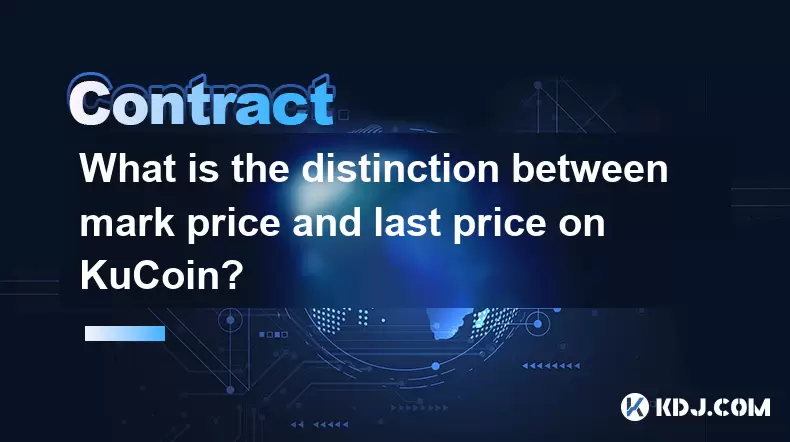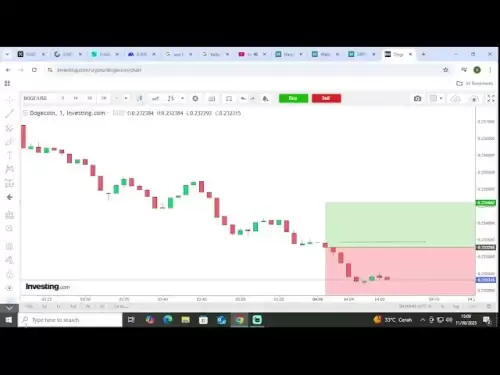-
 Bitcoin
Bitcoin $118800
-0.43% -
 Ethereum
Ethereum $4231
-0.53% -
 XRP
XRP $3.140
-1.41% -
 Tether USDt
Tether USDt $1.000
-0.02% -
 BNB
BNB $808.5
0.57% -
 Solana
Solana $175.1
-4.38% -
 USDC
USDC $0.9999
0.01% -
 Dogecoin
Dogecoin $0.2229
-4.71% -
 TRON
TRON $0.3458
2.18% -
 Cardano
Cardano $0.7744
-3.43% -
 Hyperliquid
Hyperliquid $43.19
-4.44% -
 Chainlink
Chainlink $21.19
-4.12% -
 Stellar
Stellar $0.4313
-2.84% -
 Sui
Sui $3.659
-5.59% -
 Bitcoin Cash
Bitcoin Cash $580.1
1.65% -
 Hedera
Hedera $0.2472
-4.61% -
 Ethena USDe
Ethena USDe $1.001
-0.03% -
 Avalanche
Avalanche $22.88
-3.98% -
 Litecoin
Litecoin $120.5
-2.63% -
 Toncoin
Toncoin $3.375
0.74% -
 UNUS SED LEO
UNUS SED LEO $8.984
-1.31% -
 Shiba Inu
Shiba Inu $0.00001296
-4.28% -
 Uniswap
Uniswap $11.06
1.08% -
 Polkadot
Polkadot $3.869
-4.65% -
 Cronos
Cronos $0.1664
1.09% -
 Dai
Dai $1.000
0.00% -
 Ethena
Ethena $0.7979
0.07% -
 Bitget Token
Bitget Token $4.395
-1.14% -
 Monero
Monero $268.2
-0.19% -
 Pepe
Pepe $0.00001125
-6.91%
How to conduct quantitative trading with Bitcoin perpetual contracts?
Quantitative trading with Bitcoin perpetual contracts involves developing and implementing mathematical models and algorithms for automated trading in the cryptocurrency market, capitalizing on volatility and leverage.
Dec 19, 2024 at 06:19 pm

How to Conduct Quantitative Trading with Bitcoin Perpetual Contracts: A Comprehensive Guide
Introduction
Quantitative trading, also known as algorithmic trading, involves using mathematical models and computer algorithms to automate the trading process in financial markets. This strategy has gained popularity in the cryptocurrency space, particularly in Bitcoin perpetual contracts, where traders can benefit from volatility and leverage. This guide will provide a step-by-step approach to conducting quantitative trading with Bitcoin perpetual contracts, addressing potential questions and offering detailed explanations.
Step 1: Understanding Bitcoin Perpetual Contracts
Bitcoin perpetual contracts are perpetual futures contracts that track the price of Bitcoin and allow traders to take leveraged positions on its future price. Unlike traditional futures contracts with specified expiration dates, perpetual contracts have no set maturity and can be held indefinitely. They offer advantages such as higher liquidity and the ability to trade with leverage, which can amplify both profits and losses.
Step 2: Selecting a Trading Platform
The choice of trading platform is crucial for quantitative trading. Consider factors such as liquidity, fees, and the platform's API capabilities. Look for platforms with high liquidity to ensure smooth execution of trades and low slippage. Choose a platform that offers competitive fees to minimize transaction costs. Finally, select a platform with a robust API that allows for seamless integration with your trading algorithms.
Step 3: Data Collection and Analysis
Quantitative trading heavily relies on historical and real-time data for model development and backtesting. Collect data from reputable sources such as exchanges, data aggregators, or charting platforms. Analyze the data to identify patterns, trends, and statistical relationships. This analysis will form the basis for your trading strategies.
Step 4: Model Development
Develop mathematical models that describe your trading strategy. These models can be based on technical indicators, statistical models, or machine learning algorithms. Test your models thoroughly on historical data to evaluate their performance and identify any weaknesses. Optimize your models to maximize profitability and minimize risk.
Step 5: Backtesting and Optimization
Backtest your trading strategies on historical data to assess their performance over varying market conditions. Use performance metrics such as profit factor, Sharpe ratio, and maximum drawdown to evaluate the strategy's robustness and consistency. Fine-tune your models and strategies based on the backtesting results to improve their performance.
Step 6: Live Trading
Once your strategy has been sufficiently backtested and optimized, you can deploy it for live trading. Monitor your trades closely and adjust your parameters as needed to maintain profitability. Be prepared for unexpected market events and have a risk management plan in place to minimize potential losses.
Step 7: Performance Monitoring
Continuously monitor the performance of your trading strategies. Track metrics such as profitability, risk-adjusted returns, and drawdown. Identify areas for improvement and make adjustments to your models or strategies as market conditions change.
Disclaimer:info@kdj.com
The information provided is not trading advice. kdj.com does not assume any responsibility for any investments made based on the information provided in this article. Cryptocurrencies are highly volatile and it is highly recommended that you invest with caution after thorough research!
If you believe that the content used on this website infringes your copyright, please contact us immediately (info@kdj.com) and we will delete it promptly.
- Dogecoin's Wild Ride: Big Holders, Price Push, and What's Next for the Meme Coin
- 2025-08-12 08:30:12
- Bitcoin to $133,000? Here's What the Experts Are Saying
- 2025-08-12 08:30:12
- Dogecoin, Meme Coins, and Whale Buys: What's the Hype?
- 2025-08-12 06:50:12
- Bitcoin, Ethereum, and the Pump-and-Dump Merry-Go-Round: A New Yorker's Take
- 2025-08-12 07:10:12
- MAGACOIN Mania: Why Holders Are Staking Their Claim in This Bull Season
- 2025-08-12 06:30:13
- Heritage Distilling's Bold Bet: A $360M IP Treasury Powered by Story Protocol
- 2025-08-12 06:30:13
Related knowledge

Is it possible to adjust the leverage on an open position on KuCoin?
Aug 09,2025 at 08:21pm
Understanding Leverage in KuCoin Futures TradingLeverage in KuCoin Futures allows traders to amplify their exposure to price movements by borrowing fu...

What cryptocurrencies are supported as collateral on KuCoin Futures?
Aug 11,2025 at 04:21am
Overview of KuCoin Futures and Collateral MechanismKuCoin Futures is a derivatives trading platform that allows users to trade perpetual and delivery ...

What is the difference between realized and unrealized PNL on KuCoin?
Aug 09,2025 at 01:49am
Understanding Realized and Unrealized PNL on KuCoinWhen trading on KuCoin, especially in futures and perpetual contracts, understanding the distinctio...

How does KuCoin Futures compare against Binance Futures in terms of features?
Aug 09,2025 at 03:22am
Trading Interface and User ExperienceThe trading interface is a critical component when comparing KuCoin Futures and Binance Futures, as it directly i...

How do funding fees on KuCoin Futures affect my overall profit?
Aug 09,2025 at 08:22am
Understanding Funding Fees on KuCoin FuturesFunding fees on KuCoin Futures are periodic payments exchanged between long and short position holders to ...

What is the distinction between mark price and last price on KuCoin?
Aug 08,2025 at 01:58pm
Understanding the Basics of Price in Cryptocurrency TradingIn cryptocurrency exchanges like KuCoin, two key price indicators frequently appear on trad...

Is it possible to adjust the leverage on an open position on KuCoin?
Aug 09,2025 at 08:21pm
Understanding Leverage in KuCoin Futures TradingLeverage in KuCoin Futures allows traders to amplify their exposure to price movements by borrowing fu...

What cryptocurrencies are supported as collateral on KuCoin Futures?
Aug 11,2025 at 04:21am
Overview of KuCoin Futures and Collateral MechanismKuCoin Futures is a derivatives trading platform that allows users to trade perpetual and delivery ...

What is the difference between realized and unrealized PNL on KuCoin?
Aug 09,2025 at 01:49am
Understanding Realized and Unrealized PNL on KuCoinWhen trading on KuCoin, especially in futures and perpetual contracts, understanding the distinctio...

How does KuCoin Futures compare against Binance Futures in terms of features?
Aug 09,2025 at 03:22am
Trading Interface and User ExperienceThe trading interface is a critical component when comparing KuCoin Futures and Binance Futures, as it directly i...

How do funding fees on KuCoin Futures affect my overall profit?
Aug 09,2025 at 08:22am
Understanding Funding Fees on KuCoin FuturesFunding fees on KuCoin Futures are periodic payments exchanged between long and short position holders to ...

What is the distinction between mark price and last price on KuCoin?
Aug 08,2025 at 01:58pm
Understanding the Basics of Price in Cryptocurrency TradingIn cryptocurrency exchanges like KuCoin, two key price indicators frequently appear on trad...
See all articles

























































































